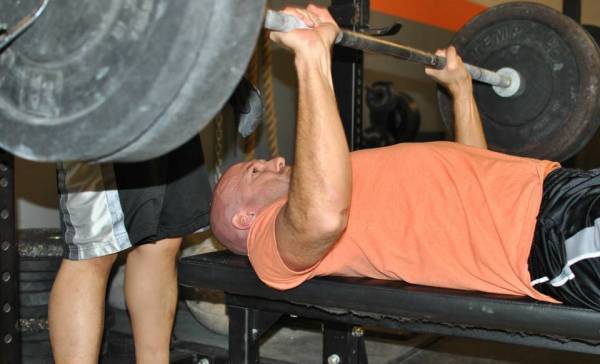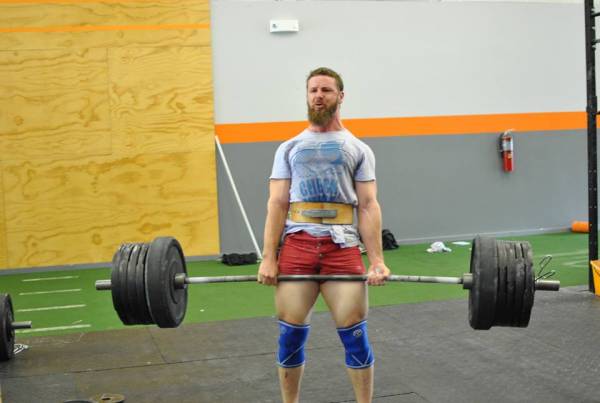Those who are new to the activity of weight training, regardless of the exact discipline, are all interested in strength. Everyone wants to be stronger. And they do get stronger. Weight training will do this quickly in novice trainees especially.
When you are a new trainee you will undoubtedly discover there are different kinds of strength. You will sooner or later discover that the strength displayed by bodybuilders, weightlifters, powerlifters, and strongmen are not all the same qualitatively. Some are strong at slow, grinding lifts, others are strong at explosive efforts, and still others can maintain their strength exertions repeatedly for long periods of time. The various ways in which strength can be expressed have now been studied quite extensively in the last several decades as the various weight sports have each gone their own way in their development. Just what are these different expressions of strength?
Expressions of Strength
The most basic expression of strength is absolute strength, the maximum amount of force that a muscle can exert. This expression of strength is most commonly seen in the powerlifts. You need to use the maximum amount of strength you have in order to squat, bench press, or deadlift. Speed is not a major factor. All you have to do is move that weight and get it to lockout. While it may seem simple, it actually isn’t, as absolute strength can be subdivided into three different components: concentric or positive direction strength, eccentric or negative direction strength, and static or isometric strength.
These three components are important to the powerlifter. The importance of concentric strength is obvious. You use it to come out of your squats, to push up on your benches, and to straighten up with your deadlifts. This is also the type of strength used by the bodybuilder even though the absolute peaking of such strength is not his or her ultimate goal.
The Importance of Eccentric Strength
 Less obvious is the importance of eccentric strength. This is the ability to contract the muscles under tension on the way down in the various lifts, most notably the squat and the bench press. Why is this important? It is important because this eccentric movement is what prepares the muscles for their subsequent concentric phase.
Less obvious is the importance of eccentric strength. This is the ability to contract the muscles under tension on the way down in the various lifts, most notably the squat and the bench press. Why is this important? It is important because this eccentric movement is what prepares the muscles for their subsequent concentric phase.
This is plainly obvious when you compare what you can bench or squat in the initial eccentric movement versus what you could do if you started your lift from the chest in the bench or at the bottom of your squat. There is simply no way you can lift as much that way as with utilizing the negative part of the lift at the start.
As a guide, your eccentric strength limit should be about 35 to 40% higher than your concentric limit in any particular movement. If it is not within that range, then you’re not getting the most out of your concentric. So if you can squat 200kg, you should aim for a 275kg negative made under control. Be warned though that eccentric training is much more efficient at producing the lactic acid that makes for day-after (and even more so second-day-after) stiffness, but that is the price of success.
The Benefits of the Touch-and-Go Method
With yet more experience another fact soon comes to light. When you bench press you notice that if you can move from the eccentric to the concentric phase as fast as possible, you will lift more. Competition rules require a complete pause at the chest before the press is made, but in training many lifters use the “touch and go” method. This is where the chest is only touched before the bar changes directions and starts to move upwards. The reason you can press more is because you get a full stretch reflex. A muscle can always exert more force if it is been stretched beforehand, so this advantage is cultivated.
It should also be obvious that the faster you can do this directional change the more force will be produced. With an instantaneous change of direction the muscles can be fully utilized when they go concentric. Compare that to the bench press, where even a short pause at the chest results in some dissipation of the potential upward concentric force. This narrow time span between eccentric and concentric exertions is referred to as the transition phase and the shorter it is the better. If powerlifting is not your thing try to think of it in terms of track and field movements. Just compare a standing broad jump and a running broad jump, or try and see how high you can high jump without an eccentric phase just prior to lift off.
The Role of Static Strength
 Finally, we have static strength. This is the kind of strength you experience when doing isometrics. You are exerting force on an object but that object does not move. This is most obvious when doing the deadlift. Your hands are gripping the barbell all during the lift, and while it is true the bar is moving upwards due to the extension of the legs and back, as far as the grip of the hands is concerned they are in eccentric contraction. Many deadlifters have found they can be strong in the concentric part of the lift (there is no eccentric portion in the deadlift), but it all goes for not if they can’t hold their grip during the lift.
Finally, we have static strength. This is the kind of strength you experience when doing isometrics. You are exerting force on an object but that object does not move. This is most obvious when doing the deadlift. Your hands are gripping the barbell all during the lift, and while it is true the bar is moving upwards due to the extension of the legs and back, as far as the grip of the hands is concerned they are in eccentric contraction. Many deadlifters have found they can be strong in the concentric part of the lift (there is no eccentric portion in the deadlift), but it all goes for not if they can’t hold their grip during the lift.
We can now see that absolute strength is not as simple as we first thought. The three components should be in correct proportion to one another if your true absolute strength is to be as high as possible.
One Final Caveat
What we have discussed is absolute strength, the most that you can do as a personal record under ideal conditions. It should be mentioned here that these absolute strength limits are not the actual absolute limit of what your muscles can do. Under certain circumstances this barrier can be moved out even further.
We have all read stories about the 110-pound woman who lifted a car off of some traffic victim. We may question the veracity of these stories, but we can still take some basic truth out of them. That truth is that with extraordinary adrenaline charges some superhuman things can be done by even the physically unimpressive. This might also be accomplished with hypnosis, various drugs, or even electrical stimulation. Why does this phenomenon exist? It exists because we have inhibiting responses in our nervous systems that cause us to fail-safe at a certain point. Why would we want to have this failsafe? Because our muscles are strong enough to pull themselves right off of the bones to which they are attached. If we did not have these inhibiting factors, then tendon rupture injuries would be all too common. So we are programmed to shut down well before the danger point is reached.
All in all that is a good thing, but I will close this by saying that champion athletes are the ones who come closest to closing the gap between our everyday absolute strength and our absolute-absolute strength. That is why champion athletes are often observed to have a “risk taker” type of personality. Those who are not risk takers will probably suffer fewer injuries but will also win fewer titles.
Next Week – Speed Strength






